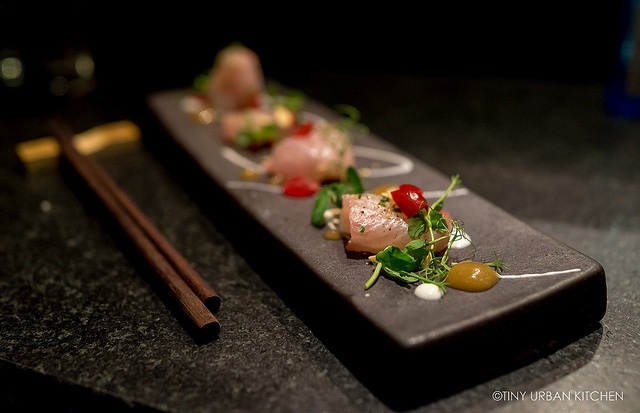
You know I must really like a restaurant when I choose the same place to celebrate two years in a row.
To be fair, I do have my own biases. After all, it's no secret that I'm in love with Japanese food, especially sushi or anything raw (hello crudo, tartare, and ceviche!). I have traveled to Japan every year for the past five years. I've made an effort to visit the best sushi places in the world, and I'm constantly seeking out new places in the States.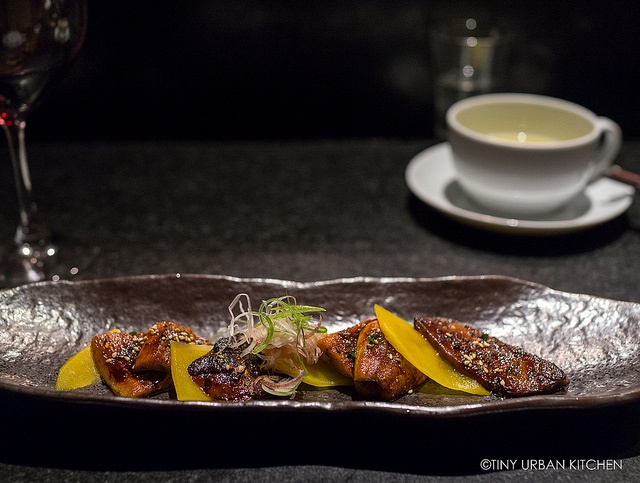
More often than not, when I'm enjoying a multi-course tasting menu, I wish all the courses would be like those lighter "crudo" (raw fish)-type courses they serve at the beginning. Why switch to the pasta course? Can we just skip the heavy meat course?
Of course, at most restaurants the answer is no. It's well established that a reasonably-paced, rational tasting menu should begin with light courses and slowly progress to the heavier, meatier ones.
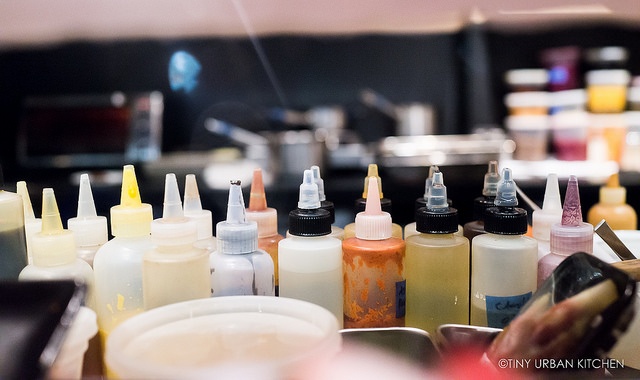
In fact, executive chef Tony Messina derives flavor profiles and combinations from all over the world (you'll see what I mean when you start reading the descriptions of his creations), and they work incredibly well.
I first met Tony when he won the 9th Annual S. Pellegrino Almost Famous Chef Regionals competition in New England. I've always been a great fan of Tony's cooking ever since I tried it at both Regionals and Nationals. He's an extremely talented chef, and I love the fun ways in which he incorporates flavors and spices from across the globe into his dishes.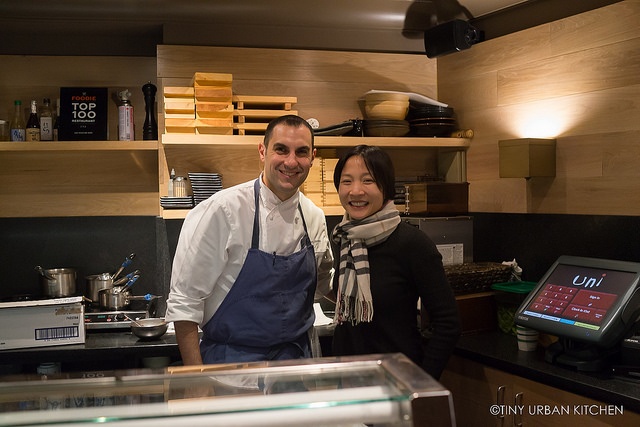
I sort of lost touch with Tony for a few years. I knew he had gone to work at Aka Bistro, a Japanese-French fusion restaurant in Lincoln, right after culinary school. But man, Lincoln is just so far from Cambridge, so I never made it out to there.
When I found out Tony had taken over the reins at Uni Sashimi Bar, I knew I had to come try it again.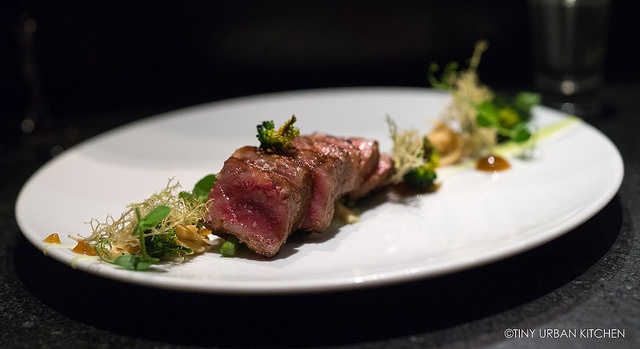
My birthday meal was the perfect opportunity, and I got exactly what I wanted.
Course after course, we sampled creatively designed and beautifully executed small bites with inspiration from all over the world. 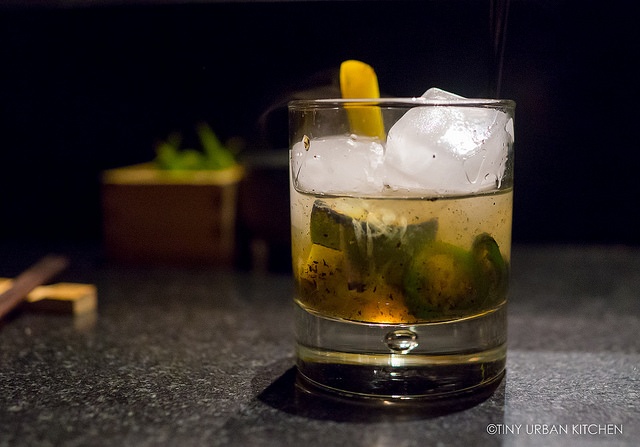
Bryan and I both started with the smoky Acedia ($13), a cocktail we tried the last time we came. This cocktail is made with "illegal" Mezcal, grapefruit, grenadine, yuzu, and ancho chili. It definitely has a kick, but what I love most about it is the intense smoky flavor.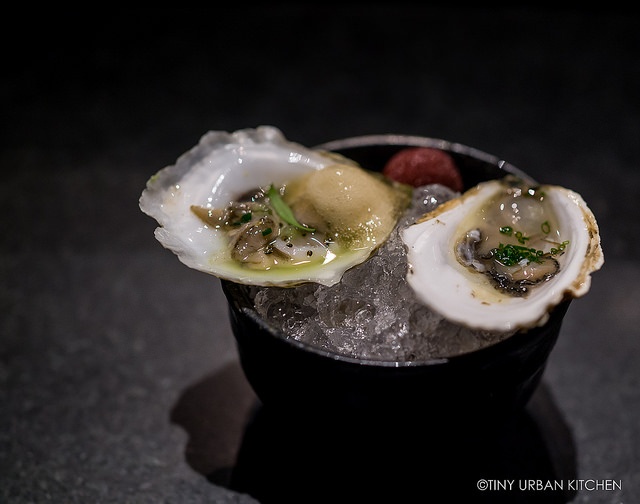
We started with a sweet and savory duo of Ichabod Oysters from Massachusetts. One was topped with tonburi, loomi, and celery and was flavored with kimchi (savory). The other one was flavored with "momo", or Japanese peach (sweet).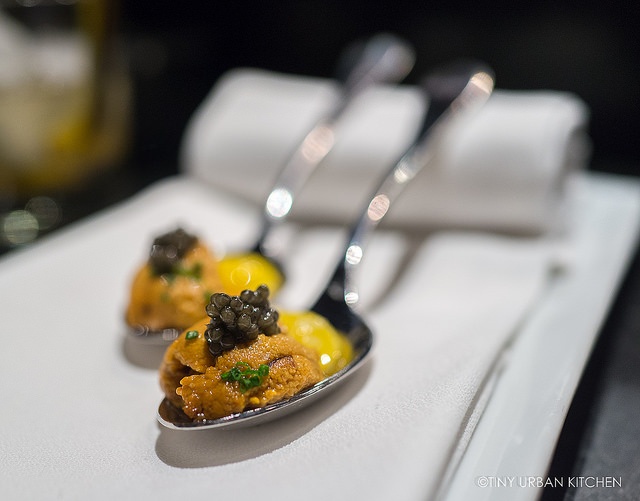
The Smoked Uni Spoon ($16) was made with sea urchin from Maine and topped with a raw quail egg yolk, Osetra caviar, and finely chopped chives. The bite was absolutely delicious - rich and creamy with a wonderful balance of flavors.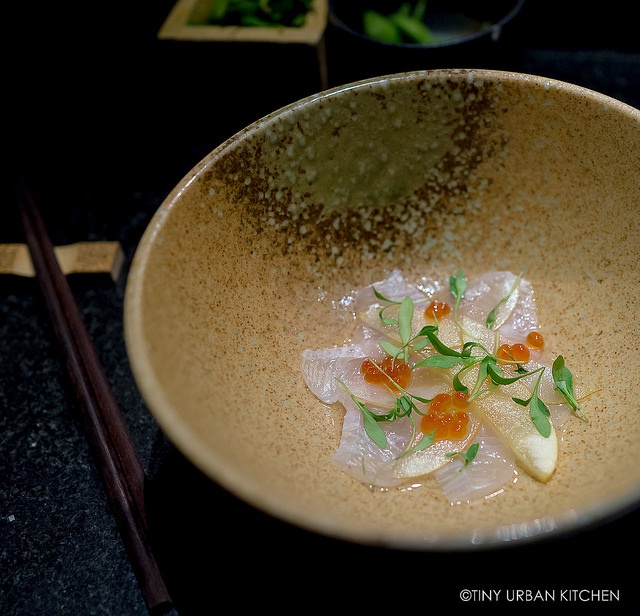
The Hirame ceviche (fluke from Rhode Island) sat in a light coconut water "broth" and was topped with house cured ikura (salmon roe) and thin slices of compressed Hitachino apple cured in Japanese white ale. I thought it was a nice way to dress up a lighter tasting fish. 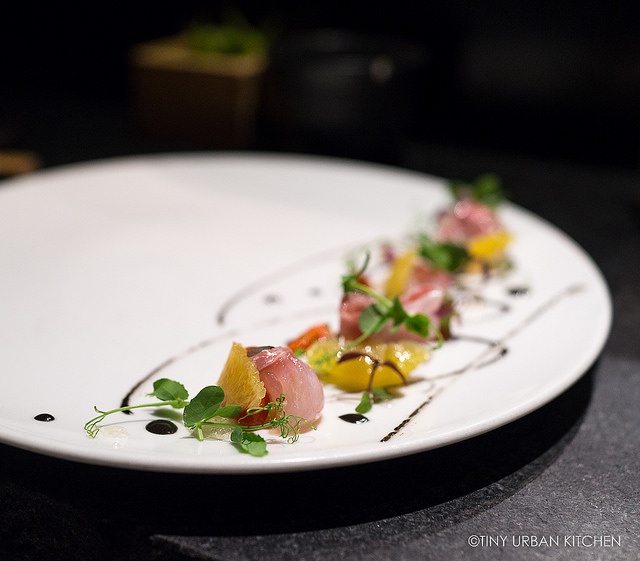
I loved how this next course, the Suzuki (hybrid bass) was presented. The plate was painted with a black sesame sauce while the slices of fish were artfully decorated with goji, pickled oranges, and choya (plum wine).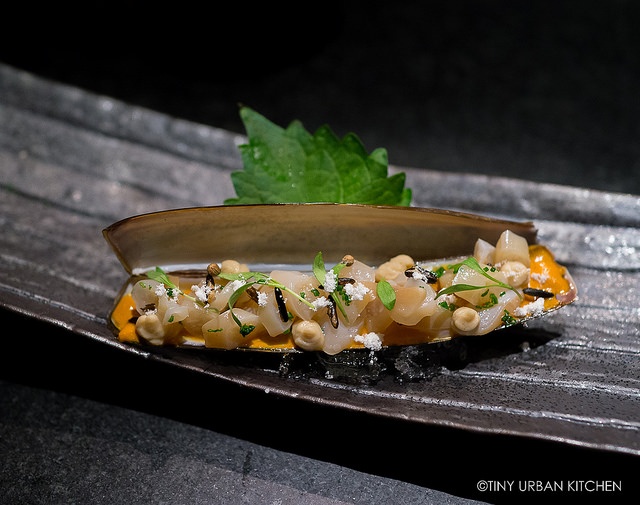
The Mategai ($15), or razor clams from Massachusetts, was one of my favorites. Inspired by Thai flavors, the chopped razor clams were served with a red curry sauce and coconut kaffir lime emulsion. Not only that, it was topped with bacon powder (I kid you not!) and sprinkled with crunchy forbidden puffed rice. I loved the Thai-inspired flavors, which most certainly gave everything a pretty spicy kick. This was fantastic.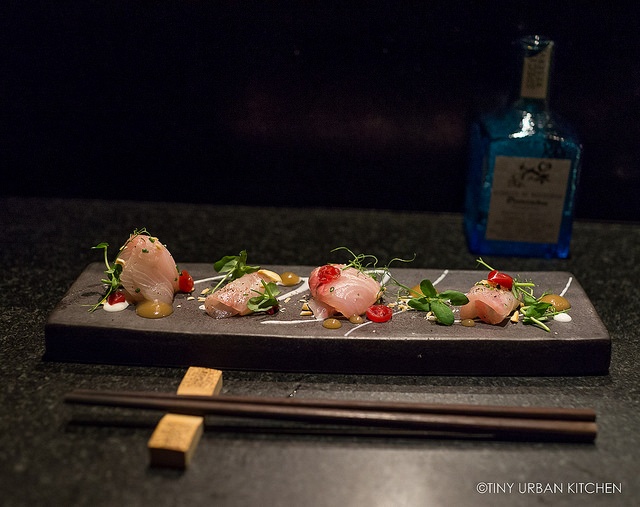
Another favorite was the Kampachi (amberjack), which Tony dressed up with New England inspired ingredients, such as almond milk "paint", cranberries, apple pie purée, and Marcona almonds.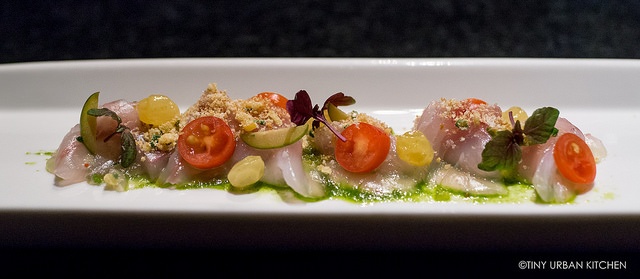
Spanish Mediterranean Sea Bass was clearly inspired by the namesake region, with Sweet 100 tomatoes, thinly sliced olives, wasabi, lemon, anchovies, golden raisins, and a cilantro pesto. Though I'm not typically a huge fan of raisins, I actually thought they worked well in this dish. Perhaps they were just a tad too sweet for my taste, but overall I liked the balance of sweet and salty in this dish.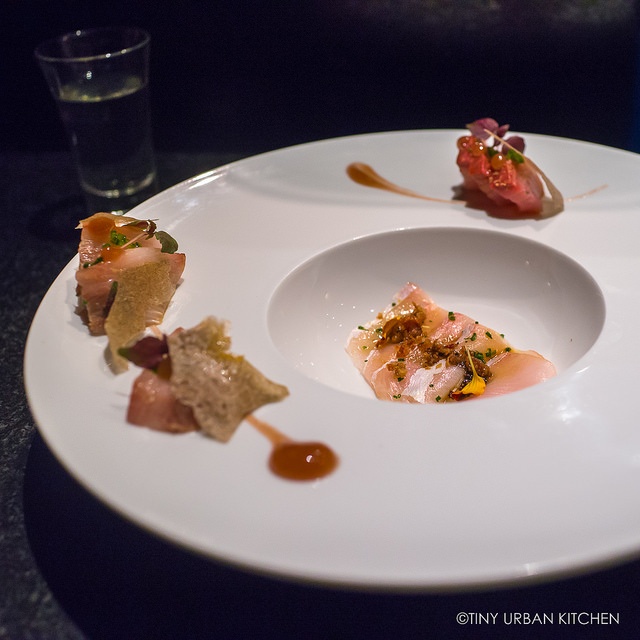
Chef Messina likes to use various parts of the plate when presenting some of his dishes. This next course showcased Hamachi, in two different ways.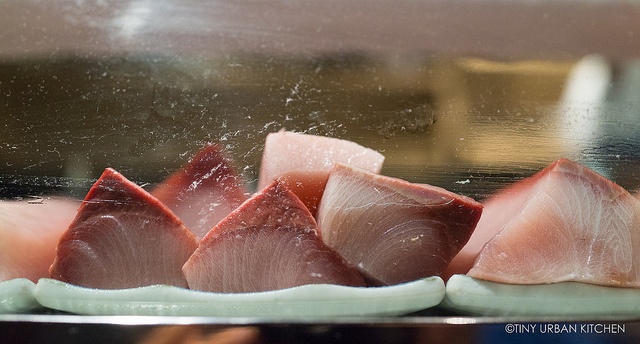
The pieces on the edge of the plate were made using lean hamachi, while the slices on the insides were made with hamachi belly.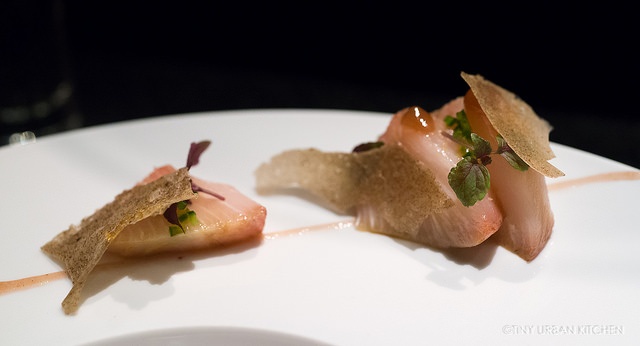
Here's a closer look. On the outer edge, lean Hamachi came served with a jalapeño jelly, fried chicharon, acetate and tapioca.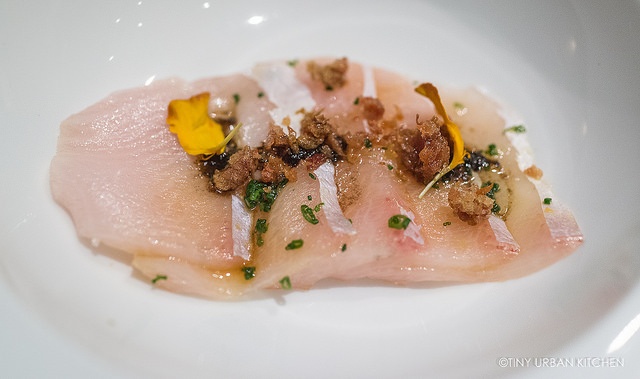
In the middle we had Hon Hamachi Toro ($20), or yellowtail belly from Japan, served with pork belly croutons in a black truffle vinaigrette.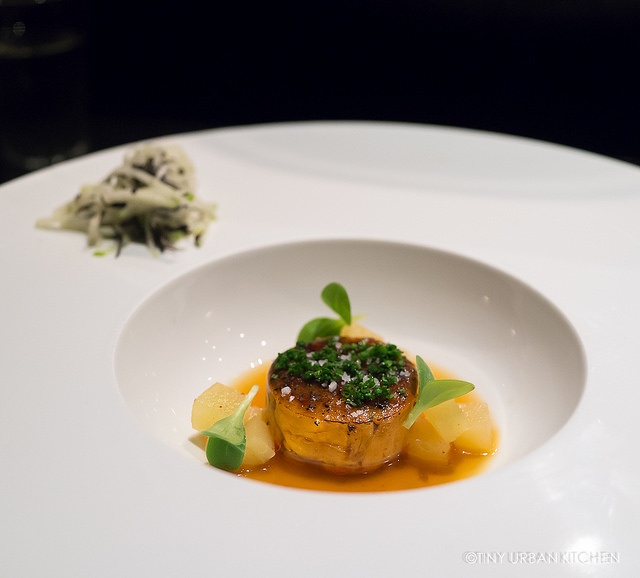
Our next course was one of our favorites. Monkfish Liver Creme Brûlée came beautifully seared and topped with chives and coarse salt. This was served together with apples compressed with daikon and baby watercress. Off to the edge of the plate sat a palate cleanser salad made with apples and wakame (a type of seaweed).
I absolutely loved the flavorful sauce binding this whole dish together. It was slightly tart but also had a boatload of umami. It was really, really good. This was one of Chef Messina's most ambitious plates but also one of the best.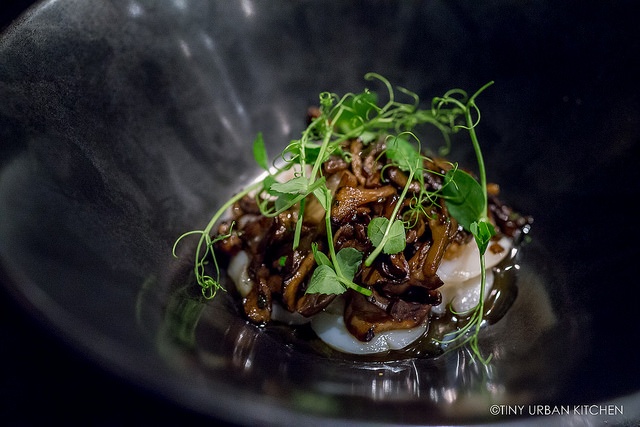 * Our next course, Hotate ($18), consisted of fresh, raw scallop from Massachusetts, maitake (hen-of-the woods) mushrooms, candied bacon, and Chinese pea shoots. Although the mushrooms and bacon had a rich, salty umami flavor, I felt that they overpowered the delicate and sweet scallops.
* Our next course, Hotate ($18), consisted of fresh, raw scallop from Massachusetts, maitake (hen-of-the woods) mushrooms, candied bacon, and Chinese pea shoots. Although the mushrooms and bacon had a rich, salty umami flavor, I felt that they overpowered the delicate and sweet scallops.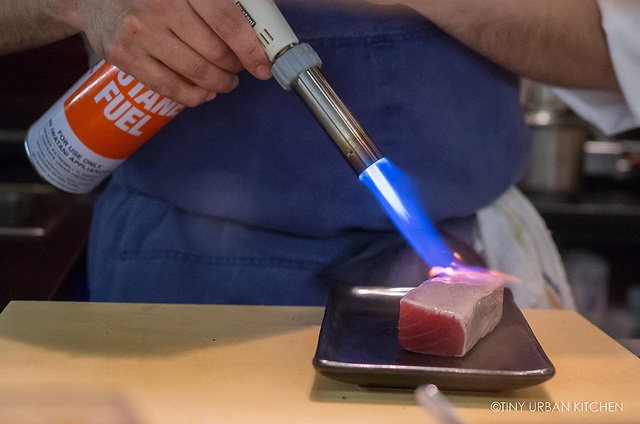
The next course, the Spicy Tuna & Foie Gras Tataki, is one of their most popular dishes. Yellowfin Pacific tuna is just barely seared with a torch and then sliced into several pieces.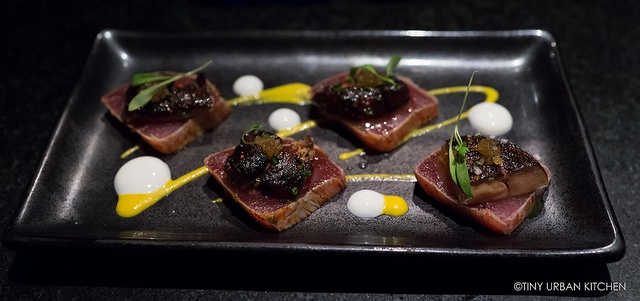
Each piece is served with a bright yellow sauce (Ajiabarillo pepper from Peru) and a white sauce (goat cheese sauce). On top of each piece tuna sits a piece of seared foie gras.
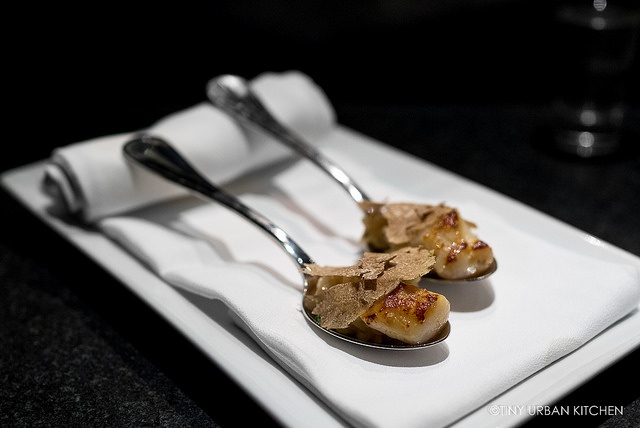
The Truffle Spoon was another fun little bite, consisting of a single, seared Nantucket bay scallop served with pickled walnuts, apple cider miso risotto, and beautiful shaved white truffle.
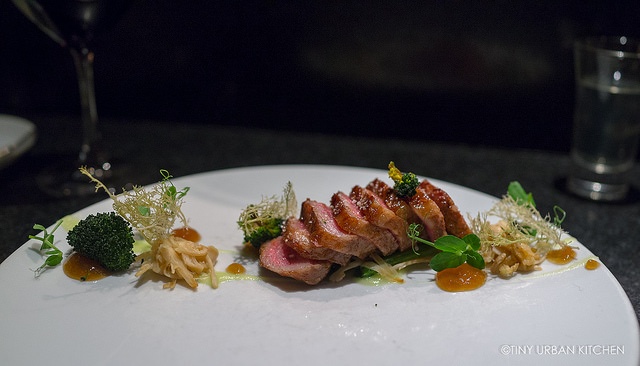
Definitely one of the treats of the night was the A5 Japanese Wagyu Sirloin from Miyazaki, Japan. For those of you not familiar with Japanese beef grades, A5 is basically the highest rating possible for steak. It's the best of the best. Check out this post where I explain a bit more about it. This stuff is hard to get outside of Japan, and you pay dearly for it, ounce by ounce (at Uni it's $30/ounce!).
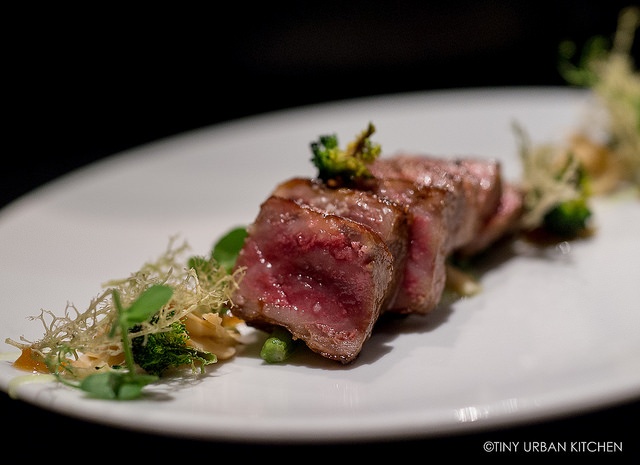
This beautiful beef came with Matsutake mushrooms which had been stewed for two hours and painstakingly pulled apart not unlike pulled pork. It also came with rehydrated lichen, dried (slightly crunchy) broccoli, a broccoli garlic mousselline, and a sukiyaki jelly.
There's not much else I can say except that it was excellent. The overall dish had the perfect blend of umami balanced with just a touch of tartness from the sukiyaki jelly. I personally loved the unique textural contrast from the web-like lichen and the dried, crispy broccoli florets.
I loved it all.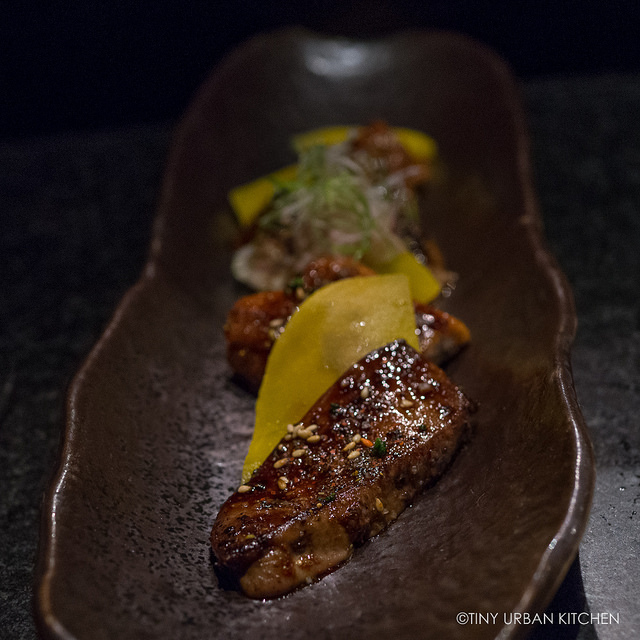 * Lacquered Foie Gras and BBQ Unagi Kabayaki ($23) was seasoned with vadouvan, a blend of spices with both Indian and French influence, as well as thin slices of mango. Both the foie gras and the barbecured unagi (freshwater eel) were nicely grilled and had that lovely, caramelized umami flavor. The dish was creamy, rich, and very tasty.
* Lacquered Foie Gras and BBQ Unagi Kabayaki ($23) was seasoned with vadouvan, a blend of spices with both Indian and French influence, as well as thin slices of mango. Both the foie gras and the barbecured unagi (freshwater eel) were nicely grilled and had that lovely, caramelized umami flavor. The dish was creamy, rich, and very tasty.
The official courses in the "omakase" had ended. Chef Messina, with a twinkle in his eye, looked at me and said,
I was already quite full, but how can you say no to this?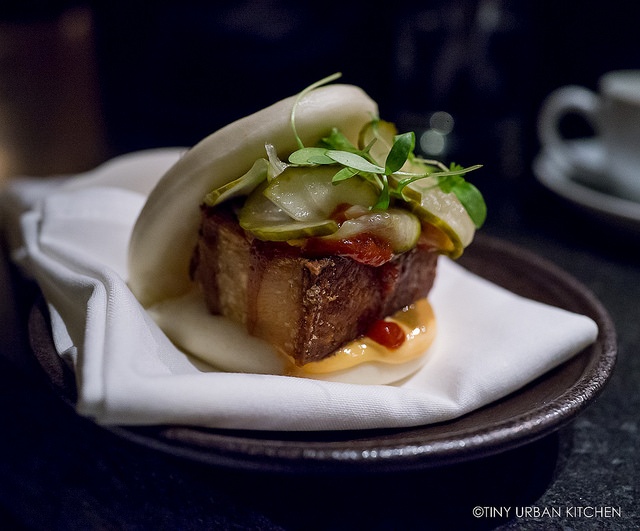
The Berkshire Pork Belly Steam Buns were fantastic. The belly itself was beautifully crispy on the outside (yet still wonderfully juicy and tender on the inside). It came with chili aioli, katsu sauce, and pickled vegetables.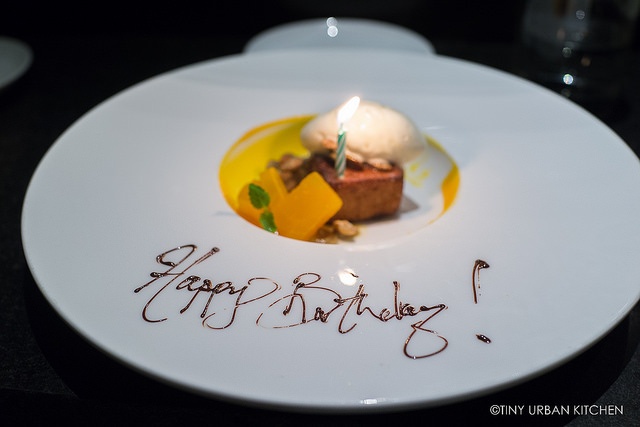
What a perfect birthday ending.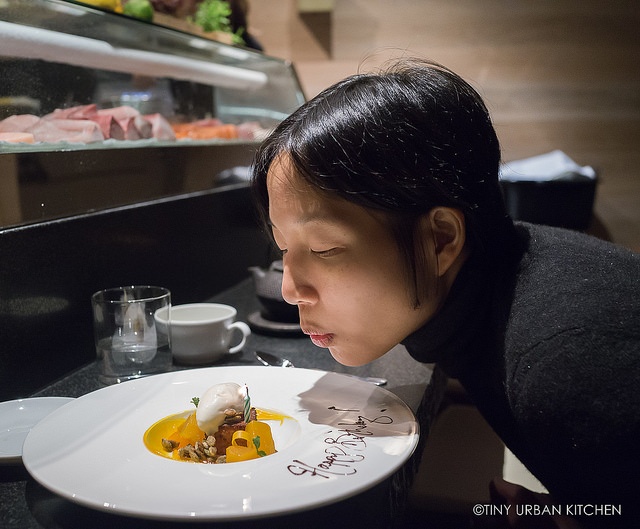
Make a wish!
I loved this dessert. It was a Quinoa French Toast served with a side of kuri squash, candied pepitos and ice cream.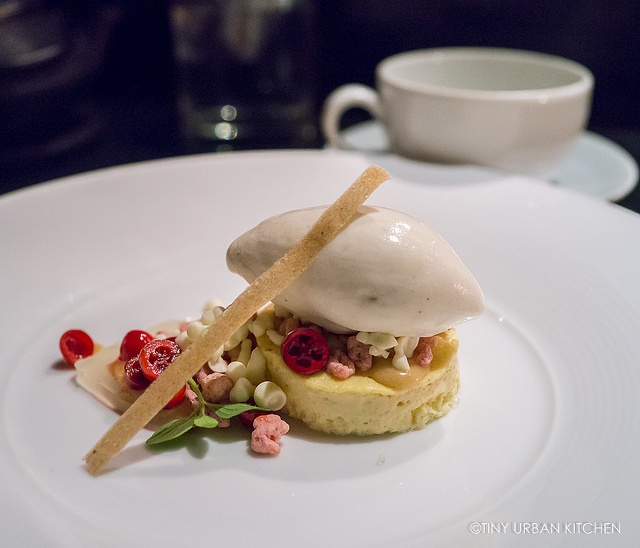
Bryan also had an unusual Miso Cheesecake, which was served with fresh cranberries, "Dipping Dots", and traditional ice cream.
Both desserts were fun and tasty.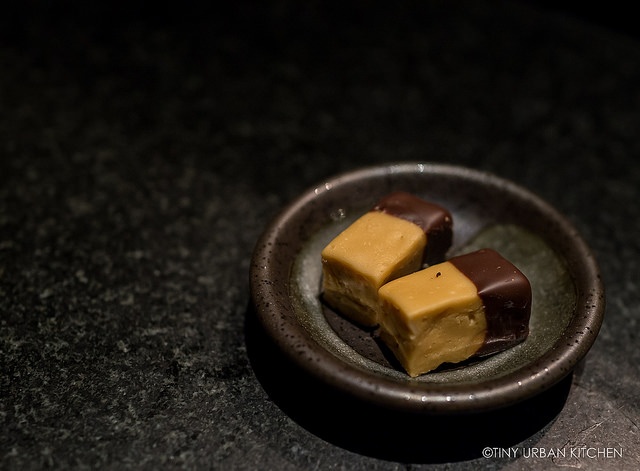
Finally, as a final parting bite, we each had simple but satisfying chocolate dipped caramels.
I had a wonderful birthday and it was exactly what I wanted.
We sat at the tiny bar (something I requested after the server first showed us to a normal table), because that's my favorite place to sit for an "omakase". It reminds me of Japan, where sushi counters are the norm and there are only bar seats. The chef makes and serves you one piece of sushi at a time so you can savor each one in the freshest, most optimal way possible.
Now, I'm not saying Uni is like Japan. Because it's not. Unlike the strict Japanese chefs who adhere to very traditional "rules" about Edo-style sushi, Tony is refreshingly creative and not at all afraid to push the envelope. He's ambitious, edgy, creative, and talented enough to make it work.
In this one meal alone, we traveled around the world. Starting in Japan as our base, we went as far as India, Thailand, stopped by Spain, visited France, and ended up in good old New England. It was a fun, dizzying at times, whirlwind of a tour for our tastebuds.
I'm thrilled that Tony is in Boston city proper now. He's really making an impact on the food scene here, and I can't wait to see what he comes up with next.
And don't be surprised if I end up at Uni again for my birthday next year, if not sooner!
Related Posts
Uni Sashimi Bar (2012)
Sukiyabashi Jiro
Oishii Boston
O Ya
All Rights Reserved








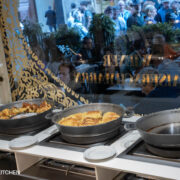
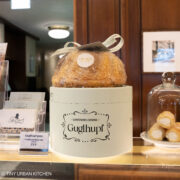
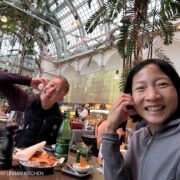
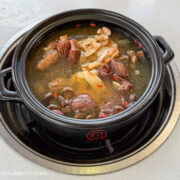

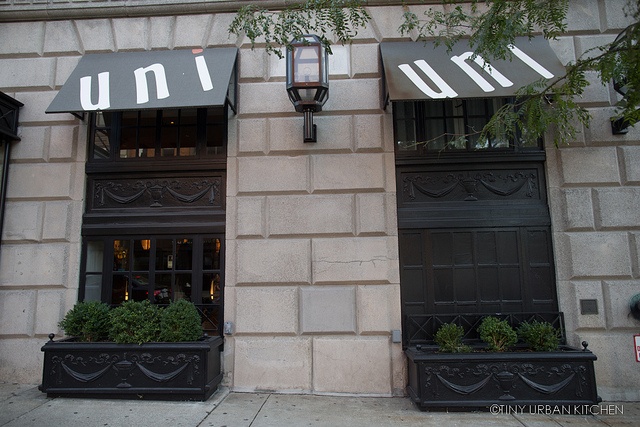
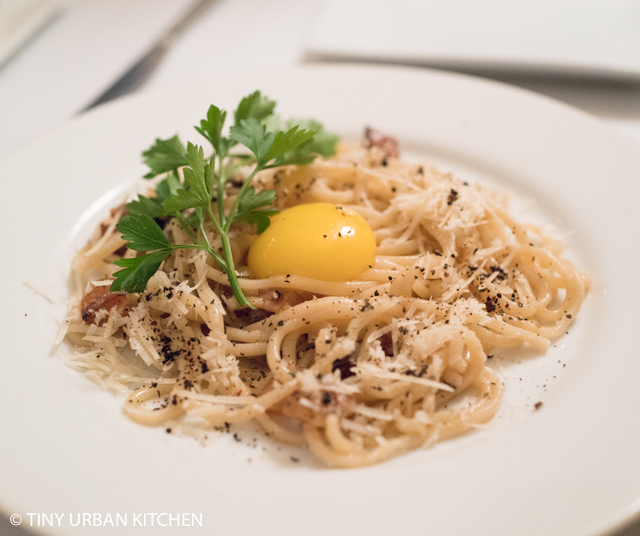
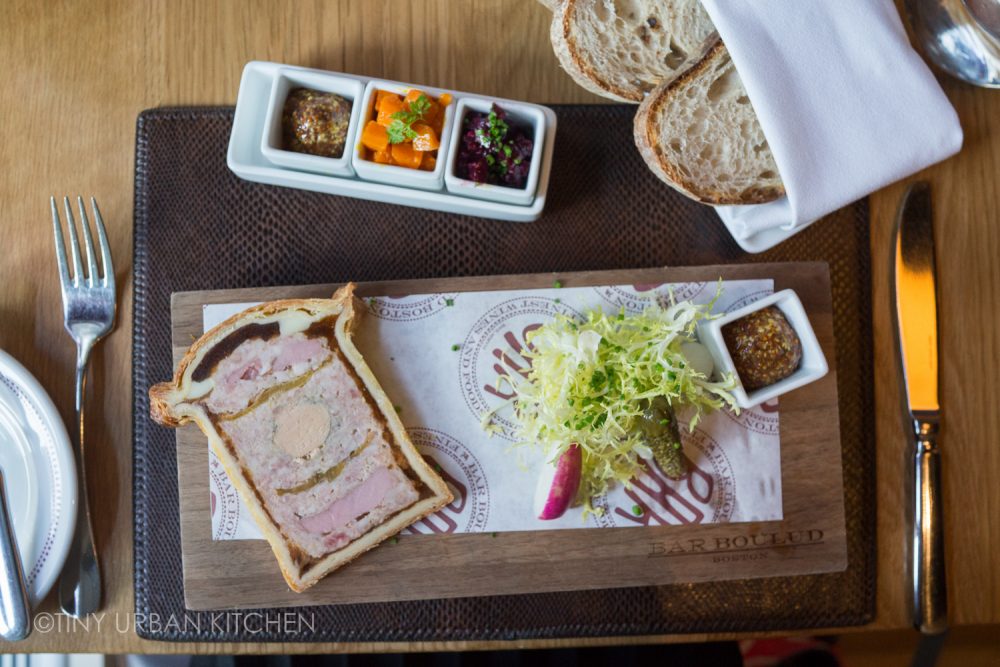

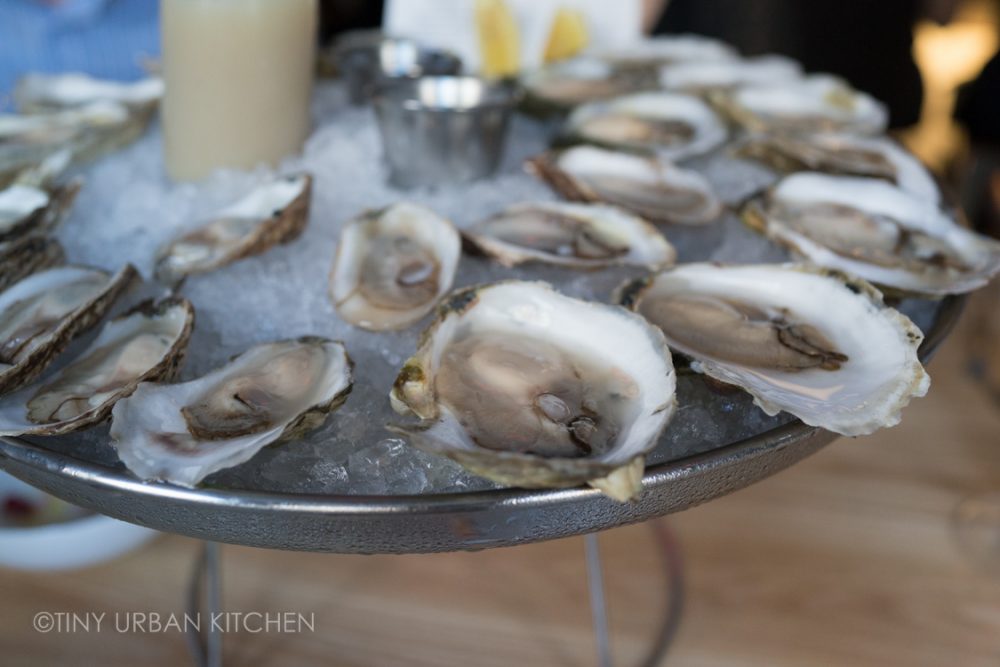
[…] one of the most famous chefs locally, and it’s not hard to see why. His restaurants Clio and Uni Sashimi Bar serve beautiful, creative, and well executed dishes. Clio is more traditional French, while Uni […]